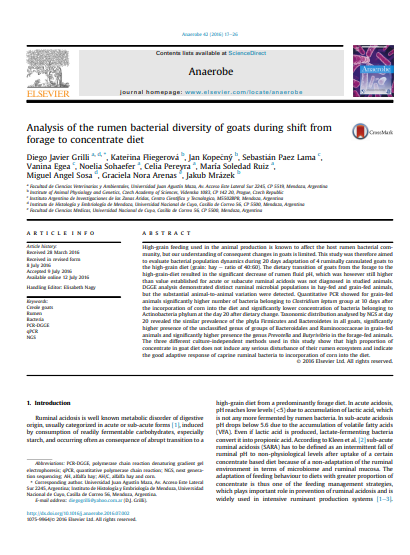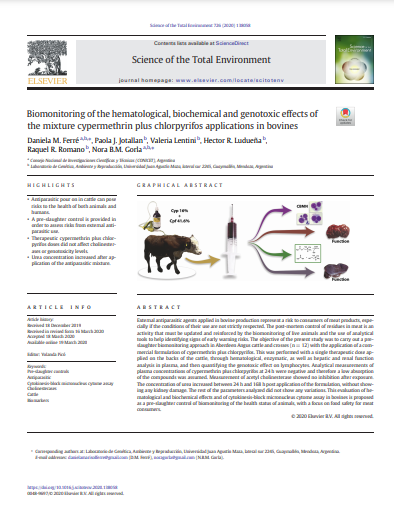xmlui.ArtifactBrowser.ConfigurableBrowse.title.metadata.type
Now showing items 1-2 of 2
-
Analysis of the rumen bacterial diversity of goats during shift from forage to concentrate diet.
(Comité editor Journal Anaerobe, 2016-07-12)High-grain feeding used in the animal production is known to affect the host rumen bacterial community, but our understanding of consequent changes in goats is limited. This study was therefore aimed to evaluate bacterial population dynamics during 20 days adaptation of 4 ruminally cannulated goats to the high-grain diet (grain: hay e ratio of 40:60). The dietary transition of goats from the forage to the high-grain-diet resulted in the significant decrease of rumen fluid pH, which was however still higher than value established for acute or subacute ruminal acidosis was not diagnosed in studied ... -
Biomonitoring of the hematological, biochemical and genotoxic effects of the mixture cypermethrin plus chlorpyrifos applications in bovines
(Science of the Total Environment Editorial, 2020-03-19)External antiparasitic agents applied in bovine production represent a risk to consumers of meat products, espe- cially if the conditions of their use are not strictly respected. The post-mortem control of residues in meat is an activity that must be updated and reinforced by the biomonitoring of live animals and the use of analytical tools to help identifying signs of early warning risks. The objective of the present study was to carry out a pre- slaughter biomonitoring approach in Aberdeen Angus cattle and crosses (n = 12) with the application of a com- mercial formulation of cypermethrin ...











